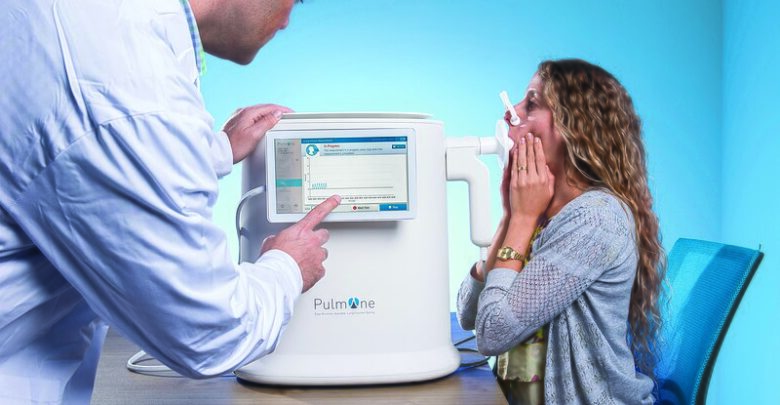PULMONARY FUNCTION TEST: WHAT IT ENTAILS AND WHY A PATIENT MIGHT NEED ONE

A pulmonary function test is a non-invasive test to examine how well a patient’s lungs are functioning. The test helps analyze the entire pulmonary system, including the lung volume, gas exchange, flow rates, and capacity. This information allows the physician to diagnose any lung problem and initiate the right treatment plan. Basically, two types of disorders may cause lung problems- air moving in and out of the lungs.
- Obstructive- this happens when air resistance prevents air from moving out of the lungs, leading to a reduced flow of air.
- Restrictive- this happens when the lung tissues and muscles cannot expand well enough, which causes airflow problems, especially because of lower lung volumes.
A pulmonary function test is necessary to detect any lung problems. It can be done using three methods.
- Oscillometry- an airwave oscillometry device from thorasys examines the pulmonary function in relaxed quiet breathing to determine any pulmonary problems.
- Plethysmography- this involves sitting in an air-tight box that looks like a telephone booth, and it facilitates the pulmonary tests.
- Spirometry- a device with a mouthpiece hooked to an electronic machine is used to examine your pulmonary function.
A pulmonary test measures many things, including:
- Total lung capacity- this is the total volume of air in the lungs when the patient breathes as much air as you can.
- Tidal volume- the amount of air inhaled or exhaled when breathing normally.
- Vital capacity- the amount of air a patient can exhale when breathing as intensely as possible.
- Functional residual capacity- this is the amount of air left in the lungs after exhaling in a normal position.
- Minute volume- the total amount of air exhaled per minute.
- Forced vital capacity- the amount of air the patient exhales forcefully and quickly after inhaling much air.
- Forced expiratory volume- the air expired during the first, second, and third seconds or forced vital capacity mentioned above.
- Forced expiratory flow- this refers to the average flow rate in the middle half of the forced vital capacity test.
- Peak expiratory flow which is the quickest rate at which the patient can force air out of the lungs.
However, normal values of pulmonary function tests differ from one patient to another depending on their body chemistry. The test results are compared to the average normal value of someone of the same sex, age, height, weight, and race. More tests are necessary when the patient has abnormal pulmonary function test results.
Which patients are good candidates for pulmonary function tests?
Many reasons warrant a pulmonary function test, but it can be a part of routine tests for a healthy patient. Some work environments such as coal industries and graphite factories also necessitate regular pulmonary function tests for the workers’ safety. It can also be used to examine lung function before a surgical procedure. Other reasons a patient may get a pulmonary function test includes conditions such as:
- Chronic lung conditions, for example, asthma, emphysema, chronic bronchitis, and bronchiectasis.
- Asbestosis- a condition resulting from inhaling asbestos fibers.
- Restrictive airway problems such as tumors, inflammation, or scarring of the lungs.
- Respiratory infections.
- Sarcoidosis which leads to the inflammation of cells surrounding organic like the lungs, liver, and spleen.
- Trouble breathing due to a chest injury or after a surgical procedure.
conclusion
Pulmonary function testing is a non-invasive procedure that is safe for all patients.






